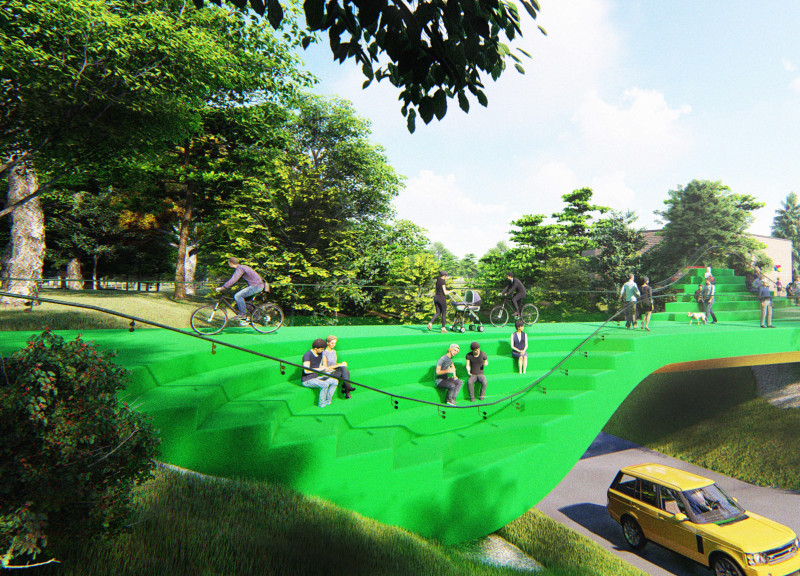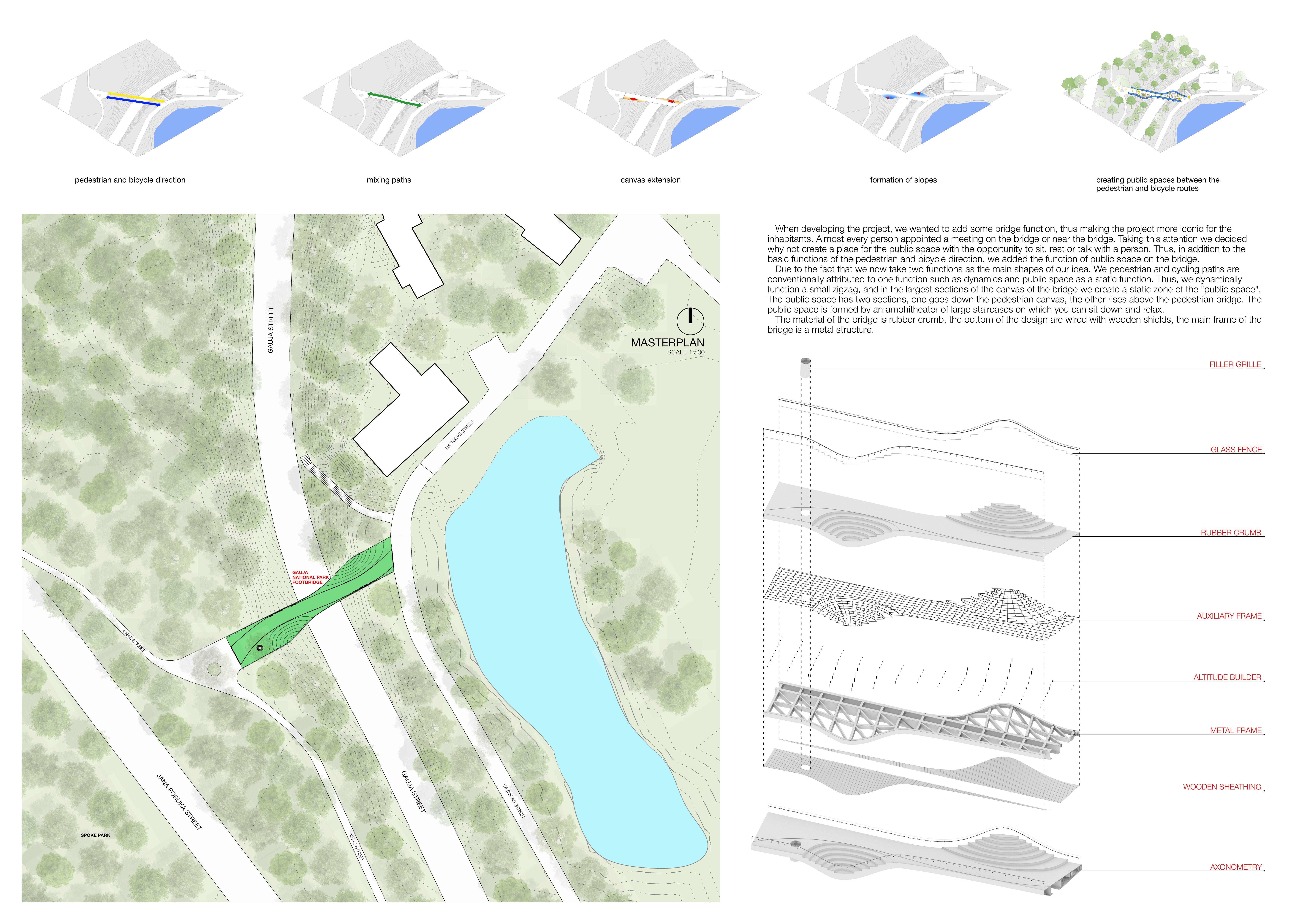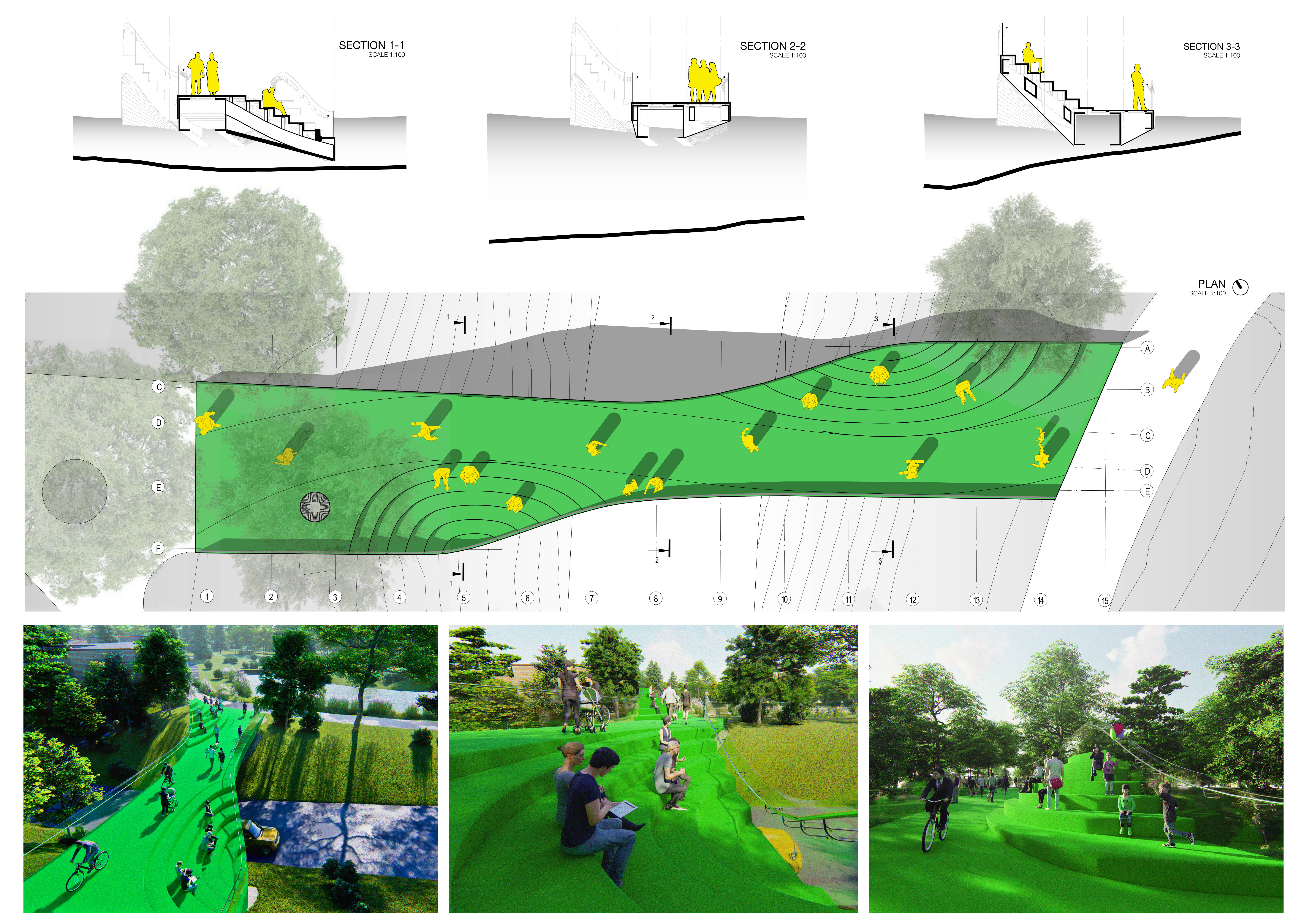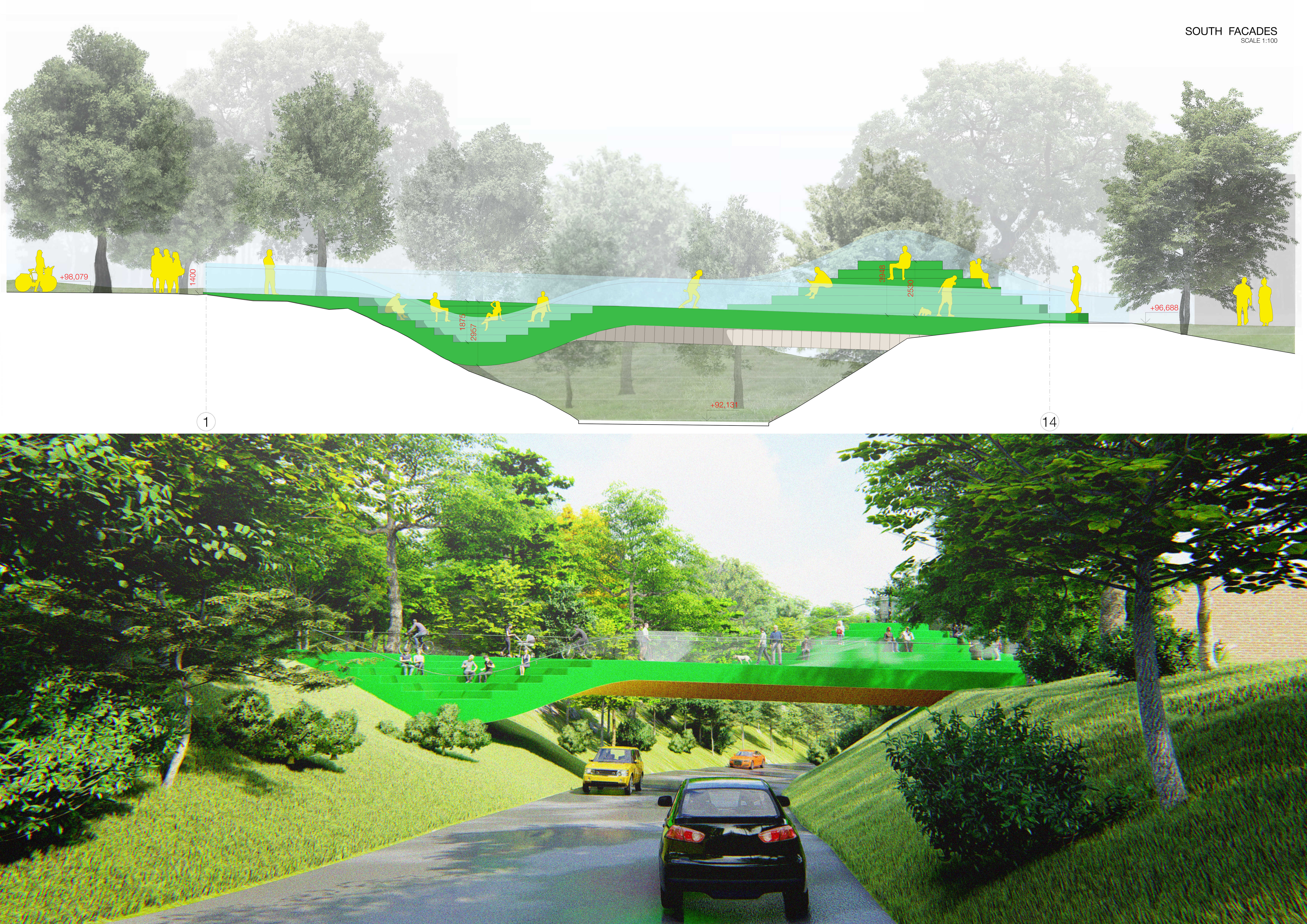5 key facts about this project
The Gauja National Park Footbridge is a well-designed structure that fits smoothly into the natural landscape of Gauja National Park. It serves two main purposes: to provide safe pathways for pedestrians and cyclists, while also creating areas where people can relax and connect. The design concept focuses on being practical while enhancing the community's experience within the park.
Design Concept
The focus of the design is on the combination of paths for movement and areas for pause. The bridge features separate pathways for pedestrians and cyclists, which promotes safety and efficiency. This division helps to keep users moving well, reducing potential conflicts between those walking and those riding bicycles.
Public Spaces
A notable aspect of the bridge is the inclusion of public spaces within its structure. There are two main areas designed for communal use: one that lowers along the pedestrian pathway and another that rises above. This setup creates an amphitheater-like space with large staircases that allow visitors to sit and gather. These areas encourage social interaction and foster a sense of community while connecting people to the park's natural beauty.
Architectural Layout
The bridge is designed with a zigzag layout, introducing interesting shapes that draw the eye. This form allows for spots to pause and rest, breaking up the movement of pedestrians and cyclists. It offers a balanced experience, catering to the need for active transport while also providing quiet areas for reflection. This thoughtful arrangement supports different activities within one space.
Materials
The footbridge is built using a variety of materials. The walking surface is made of rubber crumb, providing comfort and durability for everyone. Underneath, wooden shields give a natural touch and contribute to the overall appearance. The metal framework ensures that the bridge remains sturdy and stable. These materials work together to not only fulfill practical needs but also to connect with the surrounding environment.
Large staircases on the bridge not only facilitate access but also frame views of the scenic park, inviting visitors to enjoy the landscape while offering a place to pause and take in the surroundings.






















































